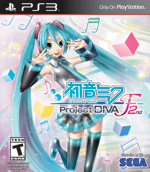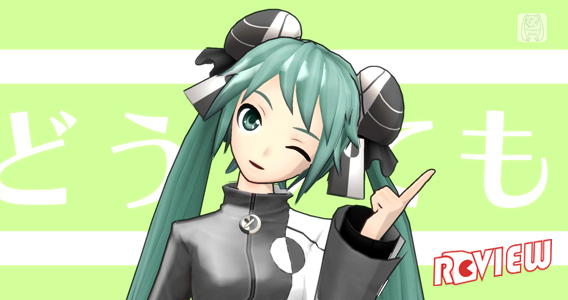
After finally debuting in North America last year, Japan’s famous virtual pop star once again struts onto the PlayStation 3 and Vita. And while Hatsune Miku brings friends and tweaks to the familiar rhythm game formula, the Vocaloid personality also brings enough customization and music to have even casual rhythm game junkies waving a glow stick before long.
Beneath the candy coated exterior, there’s significantly more groove for the offering in Project Diva than the rhythm genre is typically known for.
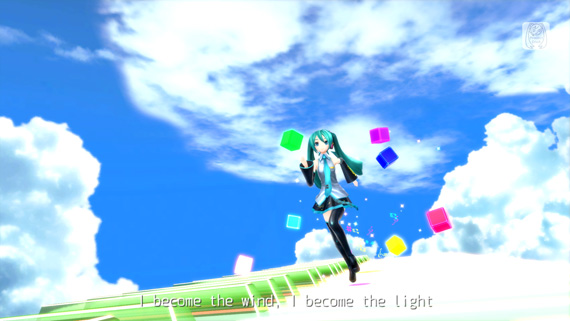
Playing songs within Project Diva presents players with a music video performance, requiring them to keep rhythm with twitch reflexes to see said performance through to the end. As a song plays, markers appear on screen, and players must hit the correct prompt as notes pass through them. Accuracy is measured on a sliding scale that moves from cool and good to bad and miss.
These prompts include the four face buttons of the PlayStation controller, though players can alternatively use the corresponding directional button for these specific prompts – pressing either “down” or “X” for an “X” prompt, for example. These come in stand alone single press prompts and notes with a long tail, where players need to hit the start of a note and then hold the same button down until the end of it reaches the marker. Other prompts include the four directions of the dpad though, and these require players to hit both the proper direction and the corresponding face button – pressing “UP” and “Triangle” for an “UP” prompt.
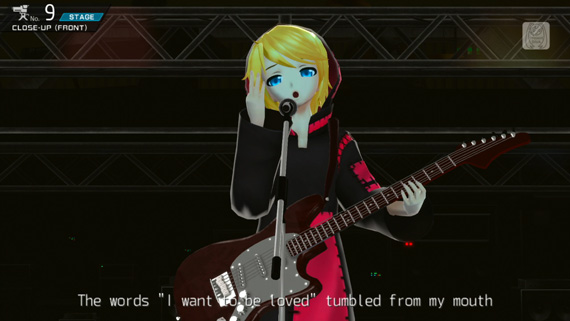
An additional on screen prompt is a “star”, requiring players to simply flick either the left or right thumbstick in any direction. Some star prompts will quickly link to other stars to create a chain, while others simply stand alone as single prompts. And then lastly, there’s a star with a “W” in the center, which requires players to flick both thumbsticks in either direction.
As straightforward as this setup might sound in digital ink, the variations can seem pretty demanding from the outset. Fortunately, of Project Diva’s many difficulty modes, the easy mode can be used to both get a feel for the music tracks as well as unlock a hefty amount of the offerings along the way – so newcomers won’t find themselves stubbornly confined to a short set list while learning how to keep the rhythm alive.
Higher difficulty settings introduce a greater variation of prompts, but the easy mode focuses on a single face button and star setup that should help anyone at least make it to “The Intense Voice of Hatsune Miku” – at which point you’d be sitting on 39 available tracks with still more to unlock.
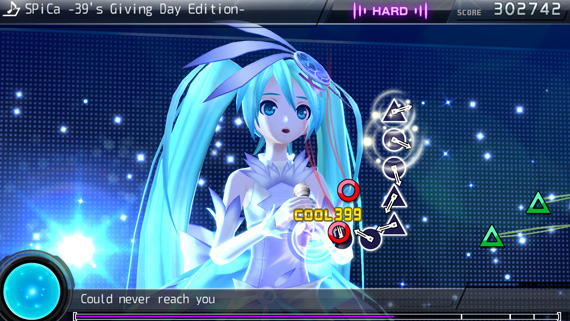
Beyond that level of play, you may begin transforming into a red eyed creature with stubby claws that avoids any level of interaction that doesn’t require quickly tapping buttons as the visuals and sounds compete to see whether your heart might explode before your eyes suck back into the sockets as you become what rhythm games are here to make us by design – a perfect being of light with fingers that react to the harmony that comes from feeling the music in your soul.
On the road toward that perfection, you will, of course, be graded harshly – either by failing the song entirely, or working up from standard, to great, and then to excellent and finally, perfect.
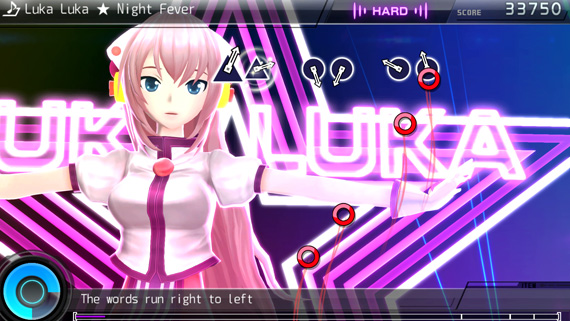
Scoring is not only a matter of completing a song, but also the means by which you earn Diva points, and there are a few additional factors for building your score toward this end. During performances, players will encounter a Target Zone meter, which requires a certain amount of notes to be hit successfully. There’s also a Chance Time period, in which players need to hit notes in order to fill a star gauge, concluding with a star prompt that players can hit to trigger an added event – a bit of additional flair for the onscreen performance. And during the regular course of play, there’s the combo chain created by maintaining a series of cool or good hits that will build until lost with a bad or outright miss.
The Diva points earned during a performance are essential for shopping, where the game offers a ludicrous amount of customization options. Every performer has additional outfits and features that can be unlocked and purchased for standard play, along with items that can be bought to decorate Miku’s Room, a quiet place where we can all spend some time chilling out with Miku.
Additional customization options allow players to change the hud skin seen during performances, and sound junkies can even change the sound each individual button prompt makes when hit during play to find that pitch perfect level of Zen.
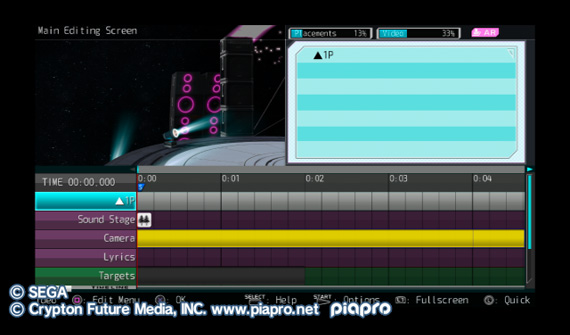
If you’re new to the franchise, you may be surprised to find an entire editing studio in the main menu, where an editing suite offers the chance to create your own performances by either using the game’s music tracks or using MP3’s from the PlayStation 3, and then adding your own note markers for play.
The customization here is a little dizzying, with options to customize the camera positioning throughout a song along with how your virtual performer will act during the performance. It’s a monstrous offering that will certainly consume a healthy portion of your life to perfect before sharing your creations with others online and sampling their creations in turn. Or, you can just upload a few tracks and watch Miku do her best to bop around to the music, whatever works for you.
Should all the stress of creating get the better of you, there’s also the opportunity to sample studio mode, where players can setup photo sessions with performers or watch performances from the audience and shake a glow stick to pump up the crowd.
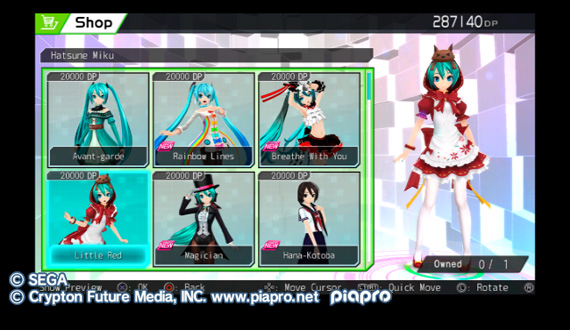
The sheer volume of customization and creation options available sets this release up as a pulsating wound in time that stands to devour anyone looking to escape into the music – which ranges from duets like “Wintry Winds” to a jazzy track like “Miracle Paint” and the rock of “Two Breaths Walking” before opening into the haunting beat of a track like “Paradichlorobenzene”.
In trying to name just a few tracks, I ended up writing down most of the track listing actually, the slow and soulful melody of “Meteor”, the fun, tricky-snaking beat of “Close and Open, Demons and the Dead”, and the absolutely mental performances “Kagerou Daze” and “Two-Sided lovers” – the list goes on and on, and in this game goes on a little bit more after that.
F 2nd might come across as a little strange and overwhelming and delightfully eccentric to anyone not already familiar with the series, with a depth of play that will certainly put you on the road to addiction and rehab, and then perhaps addiction again before finally becoming that perfect being of light capable of mastering the challenge. But if you’ve ever found yourself bitten by the infectious bug of rhythm game’s in the past, this release offers a continuing evolution on the formula with a wealth of tracks while also giving you the tools to keep the party going as long as your heart desires.
Sega, Crypton Future Media
Publisher
Sega
System
PlayStation 3 (REVIEWED), PlayStation Vita
Modes
Singleplayer
Release Date
November 18, 2014
*A copy of this title was provided by the publisher for review
